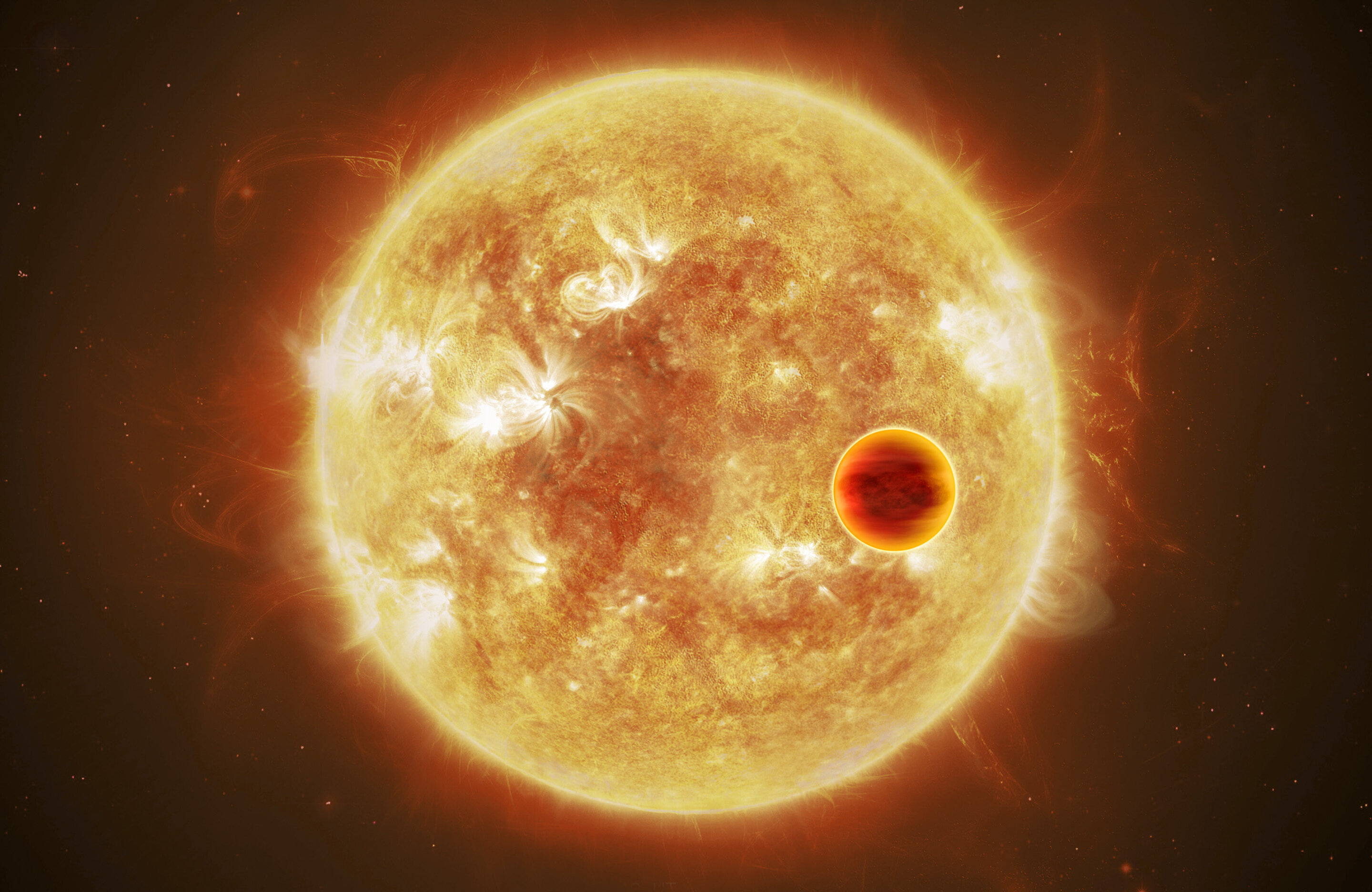
[ad_1]

Artist’s impression of an exoplanet. Credit: ESA / ATG medialab, CC BY-SA 3.0 IGO
One of the properties that make a planet suitable for life is the presence of a weather system. Exoplanets are too far away to observe it directly, but astronomers can look for substances in the atmosphere that make a weather system possible. Researchers at the SRON Netherlands Institute for Space Research and the University of Groningen have now found evidence on the exoplanet WASP-31b for chromium hydride, which at the corresponding temperature and pressure is found at the boundary between liquid and gas. The study is published in Astronomy and astrophysics.
As space probes scan the planets and moons around our Sun for extraterrestrial life, there are hundreds of billions of other stars in our galaxy, most of which are likely also surrounded by planets. These so-called exoplanets are too far to travel, but we can study them with our telescopes. Although the spatial resolution is usually insufficient to make an image of an exoplanet, astronomers can still get a lot of information from the fingerprints that the atmosphere leaves behind the light rays of the host star.
From these fingerprints – called transmission spectra – astronomers deduce what substances are in the atmosphere of an exoplanet. These could one day give an indication of extraterrestrial life. Or they can show that there is a condition for life, like a weather system. For now, however, this type of research is limited to giant planets close to their stars, say hot Jupiters. These planets are too hot to hope for life, but they can already tell us a lot about how possible weather systems work. A research team from the SRON Netherlands Institute for Space Research and the University of Groningen has now found evidence of a substance on the border between liquid and gas. On Earth, it is reminiscent of clouds and rain.
First author Marrick Braam and his colleagues found evidence in the Hubble data for chromium hydride (CrH) in the atmosphere of the exoplanet WASP-31b. It is a hot Jupiter with a temperature of around 1,200 ° C in the twilight zone between day and night – the place where starlight passes through the atmosphere to Earth. And this is found at approximately the temperature at which chromium hydride changes from liquid to gas at the corresponding pressure in the outer layers of the planet, similar to the conditions of water on Earth. “Chromium hydride could play a role in a possible weather system on this planet, with clouds and rain,” says Braam.
This is the first time that chromium hydride has been found on a hot Jupiter and therefore at the right pressure and temperature. Braam: “It should be added that we only found chromium hydride using the Hubble Space Telescope. We did not see it in the data from the VLT ground telescope. There are logical explanations for this. that, but so we use the term proof instead of proof. ”
When Hubble’s successor – the James Webb Space Telescope (JWST) – launches later this year, the team plans to use it for further investigation. “Hot Jupiters, including WASP-31b, always have the same side to their host star,” says Michiel Min, co-author and head of the SRON Exoplanets program. “We therefore expect a day side with chromium hydride in gaseous form and a night side with liquid chromium hydride. According to theoretical models, the large temperature difference creates strong winds. We want to confirm this with observations. ”
Co-author Floris van der Tak (SRON / UG) says: “With JWST, we are researching chromium hydride on ten planets with different temperatures, to better understand how the weather systems of these planets depend on temperature. ”
Astronomers see unexpected molecule in exoplanet atmosphere
Marrick Braam, Floris FS van der Tak, Katy L. Chubb and Michiel Min, “ Evidence for chrome hydride in the atmosphere of hot Jupiter WASP-31b ”, Astronomy and astrophysics, 2021.
Provided by SRON Netherlands Institute for Space Research
Quote: Evidence of substance at the liquid-gas frontier on the exoplanet WASP-31b (2021, February 3) retrieved February 3, 2021 from https://phys.org/news/2021-01-evidence-substance-liquid- gas-boundary-exoplanet .html
This document is subject to copyright. Other than fair use for private study or research purposes, no part may be reproduced without written permission. The content is provided for information only.
[ad_2]
Source link